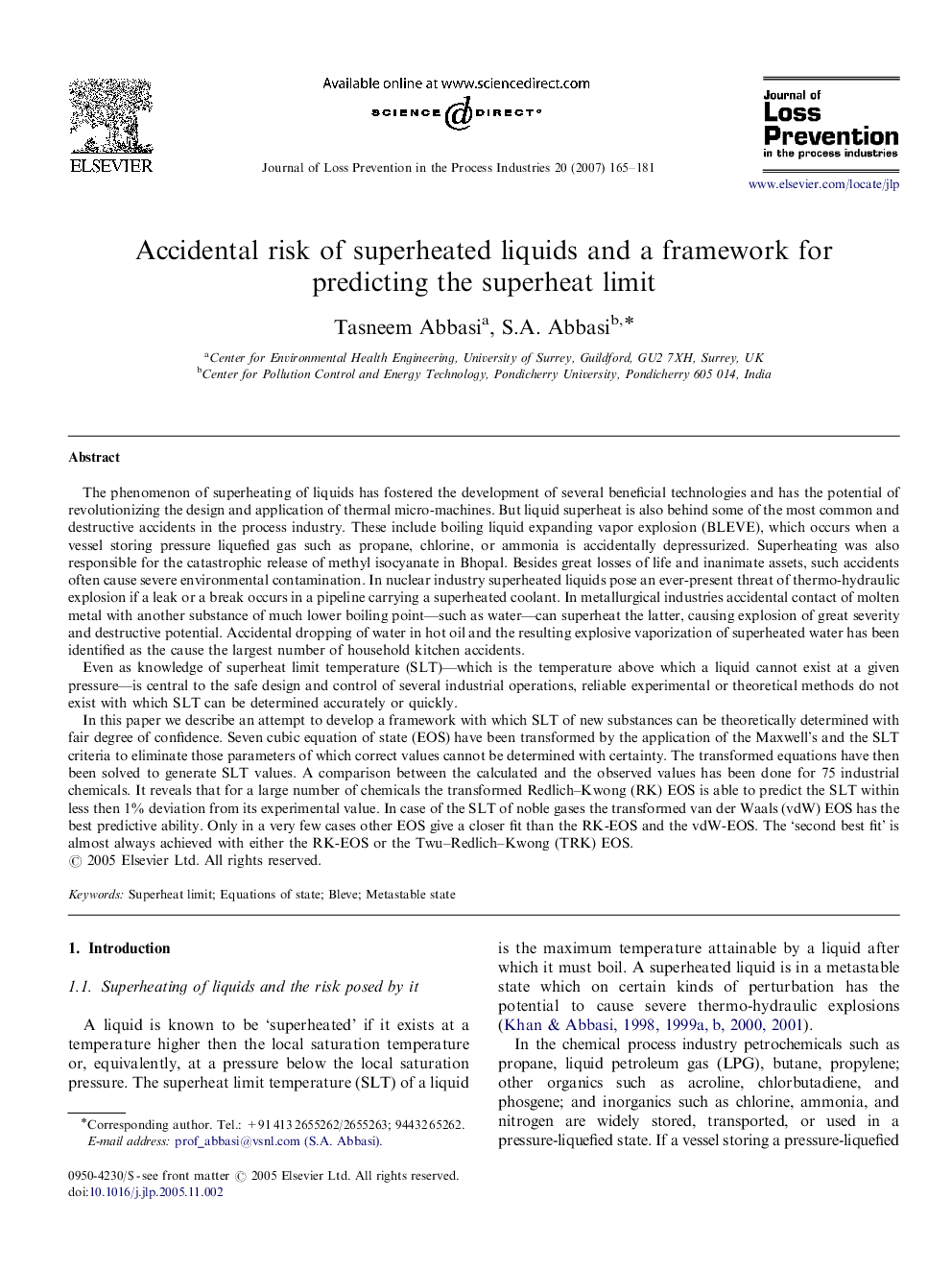| کد مقاله | کد نشریه | سال انتشار | مقاله انگلیسی | نسخه تمام متن |
|---|---|---|---|---|
| 587237 | 878284 | 2007 | 17 صفحه PDF | دانلود رایگان |

The phenomenon of superheating of liquids has fostered the development of several beneficial technologies and has the potential of revolutionizing the design and application of thermal micro-machines. But liquid superheat is also behind some of the most common and destructive accidents in the process industry. These include boiling liquid expanding vapor explosion (BLEVE), which occurs when a vessel storing pressure liquefied gas such as propane, chlorine, or ammonia is accidentally depressurized. Superheating was also responsible for the catastrophic release of methyl isocyanate in Bhopal. Besides great losses of life and inanimate assets, such accidents often cause severe environmental contamination. In nuclear industry superheated liquids pose an ever-present threat of thermo-hydraulic explosion if a leak or a break occurs in a pipeline carrying a superheated coolant. In metallurgical industries accidental contact of molten metal with another substance of much lower boiling point—such as water—can superheat the latter, causing explosion of great severity and destructive potential. Accidental dropping of water in hot oil and the resulting explosive vaporization of superheated water has been identified as the cause the largest number of household kitchen accidents.Even as knowledge of superheat limit temperature (SLT)—which is the temperature above which a liquid cannot exist at a given pressure—is central to the safe design and control of several industrial operations, reliable experimental or theoretical methods do not exist with which SLT can be determined accurately or quickly.In this paper we describe an attempt to develop a framework with which SLT of new substances can be theoretically determined with fair degree of confidence. Seven cubic equation of state (EOS) have been transformed by the application of the Maxwell's and the SLT criteria to eliminate those parameters of which correct values cannot be determined with certainty. The transformed equations have then been solved to generate SLT values. A comparison between the calculated and the observed values has been done for 75 industrial chemicals. It reveals that for a large number of chemicals the transformed Redlich–Kwong (RK) EOS is able to predict the SLT within less then 1% deviation from its experimental value. In case of the SLT of noble gases the transformed van der Waals (vdW) EOS has the best predictive ability. Only in a very few cases other EOS give a closer fit than the RK-EOS and the vdW-EOS. The ‘second best fit’ is almost always achieved with either the RK-EOS or the Twu–Redlich–Kwong (TRK) EOS.
Journal: Journal of Loss Prevention in the Process Industries - Volume 20, Issue 2, March 2007, Pages 165–181